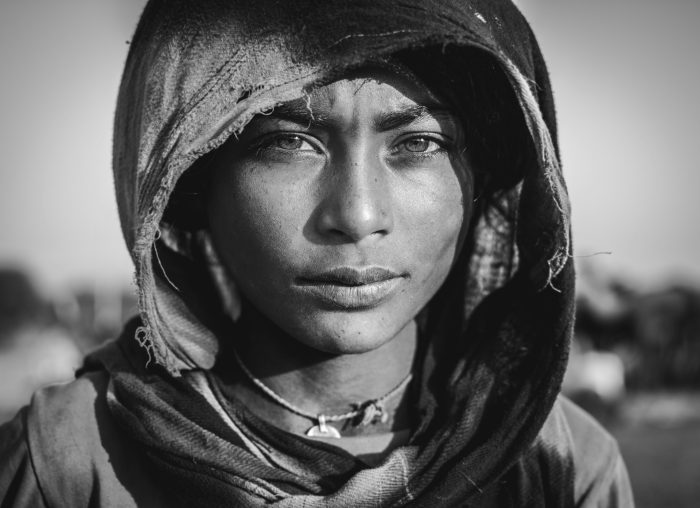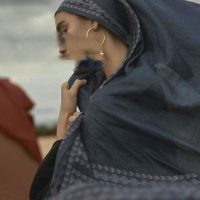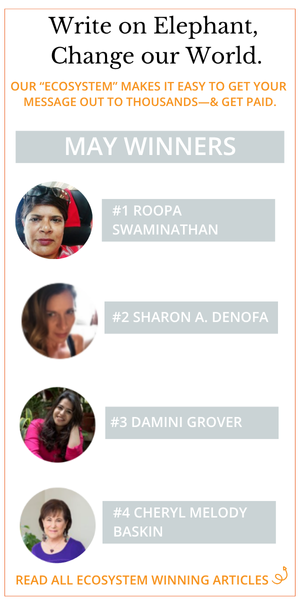In South Punjab, where the relentless sun dictates the rhythm of life, I see women who have learned to live without clocks.
Their days are ruled by the sun’s unforgiving heat, shaping their labor and testing their endurance. My name is Faiqa, a pharmacist who returned home after 13 years, only to find the resilience of these women—once seemingly unbreakable—now starting to crack under the weight of climate change and poverty.
Opportunities are scarce here. Out of four siblings, only one of my brothers found a job in our hometown; the rest of us had to leave to make a living. For women, the journey is even harder. Most stay at home, while some middle-class women become teachers. Women from poorer families either work as housemaids or at brick kilns. Though there have been improvements thanks to various human rights activists, the problems persist.
Let me tell you the story of a few women I know.
These women are the heart of our sun-soaked land. Resilient, vibrant, living their lives with all their might. They are the true “People of the Sun.” When the sun rises, they begin their day, and when it sets, they rest. When it’s mild, they work at the brick kiln; when it’s harsh, they turn to seasonal jobs.
This season, when I came home, I met Fatima—a 4-year-old with muddy feet, scraped nail paint, tiny teeth, and a radiant smile. Her hair is tied up in an annoyed ponytail at the top of her head, sticking up like a dry, wilted palm tree. She has a dusky complexion, with hair streaked in shades of brown, black, and “beetroot” from henna. She lives with her mother in a settlement of brick workers. As the temperatures rise every day, the work at the kiln becomes unbearable, and women like her mother turn to seasonal labor to make ends meet. In the summer’s peak, they shift to working in homes as house help, hoping for some relief from the sun.
Though only a child, Fatima can do most household chores. She can wash clothes with her tiny hands, sweep floors, and soon enough, perhaps even learn to cook. Fatima’s mother takes pride in it. “G, Baji, hamare mein aise hi karte hain—yes sister, this is how we do it in our community,” she says. This is her version of financial independence.
Fatima has a 6-month-old sister, Aqsa, whom she looks after like a little mother, mimicking the nurturing ways of the women around her. She cradles Aqsa in her tiny arms, swaying and whispering the same soothing words she hears from the aunties. But sometimes, when Aqsa’s cries pierce the hot, still air, Fatima, tired and frustrated, tells her mother she might throw her “daughter” away, only to be met with her mother’s patient smile.
Fatima’s bond with her mother is something special. You might not see it, but her mother gives her all to Fatima. She tries to dress her in the best available clothing, even if it means taking a day off work to clean their heads of lice or apply henna. In a world where women are expected to endure, Fatima has become her mother’s greatest support. Together, they face each day, finding strength in each other.
Fatima’s mother is worried, working even harder so that someone might hire her son, Ahmad, as a caretaker before winter arrives. For the past few years, brick kilns have shut down during winter due to the rising smog, leaving many families without work. Ahmad, only nine, carries the weight of labor on his small shoulders. When asked what it’s like to work at the brick kiln, he shrugs and says, “It’s hard, but it’s our livelihood.” He pauses, then explains, “When you’re digging a ditch to mix mud, and you accidentally hit your cold, bare feet with the spade, it feels like death.” It’s hard to imagine that a nine-year-old boy knows what death feels like, yet here, even children understand the cost of survival.
Then, there’s Noreen, another woman from the community. She’s young but already a mother of five. Her children attend a community school, and she’s proud of it. She sees her work at the kiln as a blessing because it offers some security. “Maut faut, maran jeen—the owners take care of our births and deaths,” she says, valuing this small support system even if it’s debt. Noreen’s youngest, around nine months old, suffers from constant diarrhea. In the scorching summer, she ties her baby in a makeshift swing made by her dupatta (shawl), hanging from two tree branches. The child sways in the heat while she works. She doesn’t understand heat stress or gastrointestinal disturbances; she only knows how to survive.
One day, Noreen told me a story about a child who drowned in a rain-filled ditch at the kiln during an exceptionally heavy monsoon two years ago. The kiln closed, debts were cleared, and life went on. They moved to another kiln, and Noreen held on to the hope that her children’s education would change their fate.
Then there’s Shahnaz, somewhere in her 40s, though it’s been a while since she kept track. She recently delivered a baby via C-section. The stitches got infected due to extreme heat and sweat, taking six months to heal. When I asked her if it was hard to deliver a baby this way, she said it was her first C-section after seven normal deliveries, all because of placenta previa. It was a tough pregnancy and an even tougher delivery. But she did it because she lost a daughter two years back.
I asked her what happened. “She died of kawir—bitterness, anger,” she said. The girl was fine throughout her pregnancy, but one day, after cooking on a tandoor (a clay oven) for guests, she got so angry from exhaustion that it triggered a fit, and she died after delivering her baby. I asked Shahnaz if her daughter had swollen feet and hands, experienced heat flashes. “Yes,” she said. I explained that her daughter didn’t die of bitterness. She had gestational hypertension, leading to eclampsia. Shahnaz nodded, recalling the doctor mentioning a disease named “Malaysia.” The doctor said it was becoming more common in their area.
The rising temperatures and increasing smog are not mere inconveniences but life-altering challenges for families here. The heat intensifies fatigue, complicates pregnancies, and leaves children vulnerable to illnesses that have no name in their vocabulary. Climate policies debated in far-off cities like Baku remain abstract concepts, while here, they mean the difference between life and death.
I wanted to tell them that temperatures might rise even more, that heat harms children and women’s reproductive health, that the air quality won’t improve anytime soon. But I couldn’t. I never realized how climate injustice prevails in my own area. Policies are formulated far away, while here, my women and children are dying from effects they are unaware of, from diseases they can’t even pronounce.
These are my people of the sun—resilient, enduring, but now, their resilience is cracking. Their stories need to be heard, their struggles acknowledged, not as mere statistics but as calls to action. If policies do not adapt to include the voices of those most affected, the resilience that defines South Punjab may shatter beyond repair.
It’s time we turn our attention to those who live closest to the sun and are most affected by its fury.
~

 Share on bsky
Share on bsky




Read 6 comments and reply